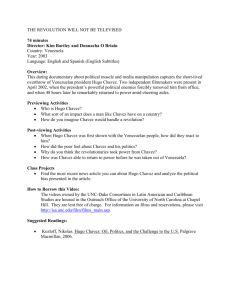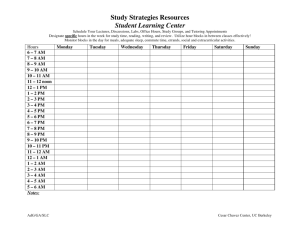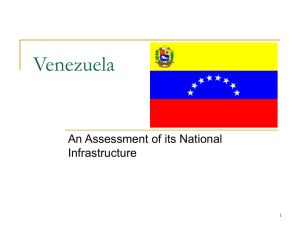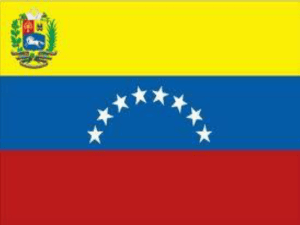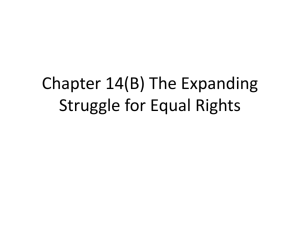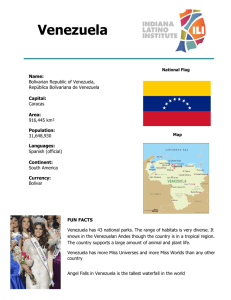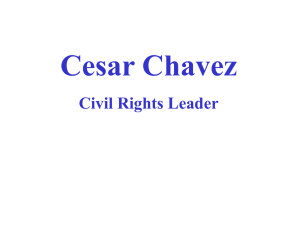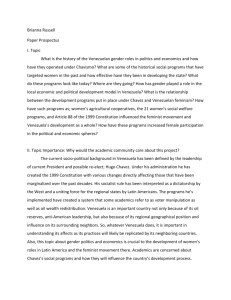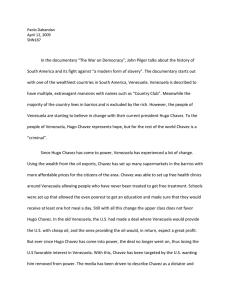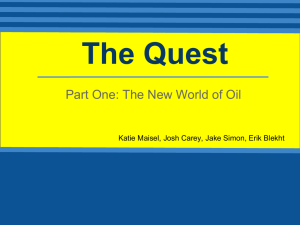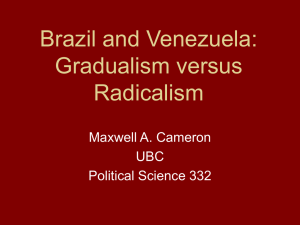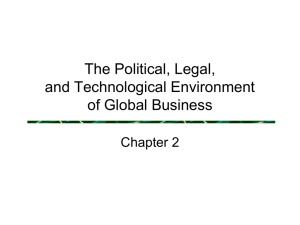Bolivarian Republic of Venezuela
advertisement
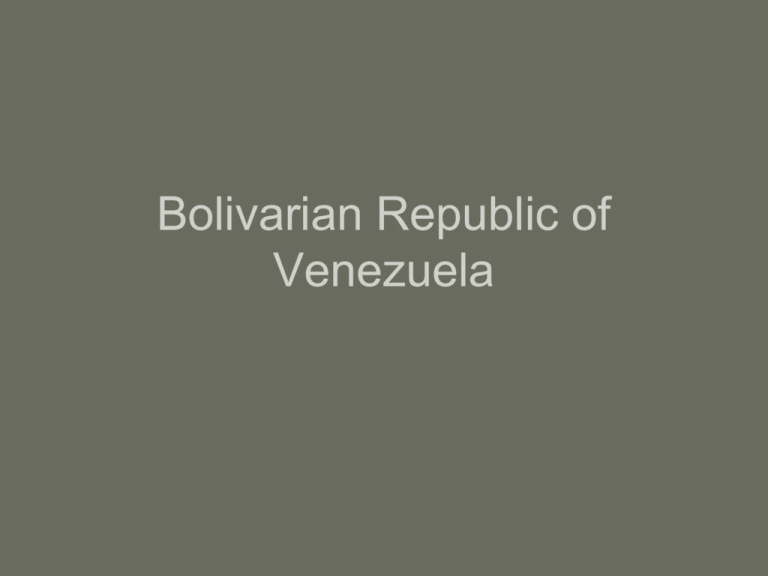
Bolivarian Republic of Venezuela Background • • • • • President: Hugo Chavez (since Dec.1998) Population: 24.3 million Capital: Caracas Currency: Bolívar Area: 912,050 sq. km. (slightly more than twice the size of California). • Other major cities--Maracaibo, Valencia, Barquisimeto. • Terrain: Andes Mountains and Maracaibo Lowlands in northwest; central plains; Guiana Highlands in southeast. • Climate: Varies from tropical to temperate, depending on elevation Natural Resources • Venezuela has one of the largest known oil deposits in the world as well as huge quantities of coal, iron ore, bauxite and gold, nickel and diamonds. • Venezuela is a major supplier to the U.S. and the Caribbean. • Venezuela utilizes vast hydropower resources to supply power to the nation’s industries Environment • Venezuela’s Environmental problems: – A high rate of deforestation relative to its South American neighbors. – Fossil fuel production and consumption without sufficient mitigation. – Oil pollution in water supplies. • More than 30 oil spills have occurred in past years • The occurrence of spills has declined, the waters remain contaminated. – Air pollution in urban and industrial areas. Historical Overview • Pre-Colombian inhabitants of Venezuela: – The Carib, the Arawaka, and the Chibcha. • Named by explorer Alonso de Ojeda. – “Little Venice” • Spanish colony 1521-1821. • Declares independence from Spain in 1810. • 1821 official liberation – Simon Bolivar and his campaigners. Political Institutions • Constitution – Chavez elected in 1998 calls for a referendum to convene the Constituent Assembly to write a new constitution. – Single member district based formation of CA gave majority control to Chavez political coalition Polo Patriótico (PP) – Ratified December 1999 – Chavez re-elected president in 2000 special election. Legislative Branch • Constituent Assembly replaced with a National Assembly – Unicameral – First-past-the-post single member districts and party list combination (proportional representation). – Five year term, possibility of two re-elections (15 year maximum). – Legislation can be initiated by legislature, president, judiciary, citizen branch, public petition signed by .1% of the registered voters. Executive Branch • President (single executive) – 6 year term, limited to two terms. – Plurality vote (direct, universal suffrage). – Vice President appointed by President • Council of Ministers – Cabinet appointed by the president. – Size determined by president. – Advice of National Assembly. Judiciary • Supreme Tribunal of Justice – 6 specialized chambers, also meets as plenary – Appointed by National Assembly and serve 12 year terms. – 1999 constitution set number at 20. This was amended to 32 in 12/2004 amendment ratified by the National Assembly. – Lower courts: district courts, municipal courts, courts of first instance. Citizens Branch • Three Components: – The attorney general – Ombudsman • Public officials appointed to investigate citizen complains against government agencies or officials. – Comptroller general • The Republican Moral Council – Has the power to challenge to the courts actions which they believe are illegal or violate the constitution. – Selected for 7 year terms by the National Assembly. Chavez post 1998 • After several assassination and coup d’etat attempts, Chavez began to introduce many government reforms. • In 2001, Chavez introduced more than 50 reform laws including land and oil industry reforms. – Land redistribution – Nationalization of hydrocarbons – The Revolution will not be Televised • All of these reforms were controversial and sparked new anti-Chavez movements. Nationalization of Industry • Pros and Cons: – MNCs have not given “good deals” in contracts with resource rich countries. – Ex: Oil industry quarterly profits vs indebtedness of resource rich countries – Countries with political development problems are not able to regulate foreign or domestic industry = ongoing pollution and an absence of mitigation strategies Nationalization of Industry • Pros and Cons: – Nationalization requires effective management. – Ex: Chilean mining industry nationalized by Salvador Allende and NOT privatized by Augusto Pinochet. Today it is as competitive and productive as any private concern. – Nationalization does mean that the state directly controls profits.
